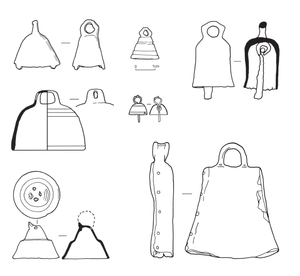The sound of magic? Bells in Roman Britain
Hella Eckardt, 2017. https://doi.org/10.5284/1043774. How to cite using this DOI
Data copyright © Dr Hella Eckardt unless otherwise stated
This work is licensed under the ADS Terms of Use and Access.
Primary contact
Dr
Hella
Eckardt
Department of Archaeology
University of Reading
Whiteknights
Reading
RG6 6AA
England
Resource identifiers
- ADS Collection: 2842
- DOI:https://doi.org/10.5284/1043774
- How to cite using this DOI
Introduction

This project analysed Romano-British bells and explored their dates, contexts and spatial distribution; it is based on an unpublished MA dissertation by Sandie Williams. The material deposited here consists of a database of just over 300 examples and is accompanied by an academic paper in the journal Britannia. This paper explores the significance of bells in the Roman world from both a ritual and functional perspective. We create a first typology of Romano-British bells, provide an understanding of their chronology, and examine any spatial and social differences in their use. Special attention is paid to bells from funerary or ritual contexts in order to explore the symbolic significance of these small objects. Bells from other parts of the Roman world are considered to provide comparisons with those from Roman Britain. The paper demonstrates that small bells were used as protective charms, and may have been preferentially placed into the graves of children and young women. The paper identifies a new, probably Roman type of bell that has no parallels within the Empire although similar pieces occur in first and second century graves in the Black Sea region.
Image: Romano-British bells from Colchester, Coventina’s Well, Trentholme Drive, Loughor, Catterick and Beadlam (after: Crummy 1992, Fig. 5.51.1663 and Crummy 1983, Fig. 54.1811; Allason-Jones and McKay 1985, Fig. 67; Wenham 1968, Fig. 36.7; Marvell and Owen-John 1997, Fig. 101.158; Wilson 2002, Fig. 301.16; Neal, 1996, fig. 40.96).





